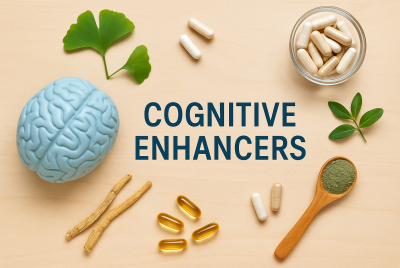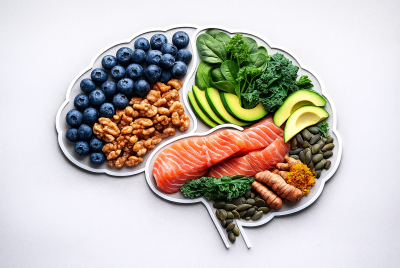Fall: The Perfect Time For A Mental Health Check-In
We may earn a commission for purchases made using our links. Please see our disclosure for more details.
As the leaves begin to turn and the air cools down, it’s an ideal moment to pause and reflect—especially on your mental health check-in. The change of season reminds us that transitions happen, and so does our inner world. Whether you’re feeling steady or slightly off balance, a seasonal check-in can help you stay grounded and resilient.
Why Is a Mental Health Check-In Important?
Life moves fast. It’s easy to focus on everything except how you feel inside. A mental health check-in is like routine care for your mind. It helps you pause, think, and notice small changes before they turn into bigger problems.
When you stop and ask, “How am I really doing?”, you start to see patterns. Maybe you’re sleeping less, feeling stressed, losing motivation, or getting irritated easily. These signs may seem small, but they’re your mind’s way of saying it needs attention.
Research shows that being self-aware early can build strength and prevent more serious mental health struggles later. A check-in also helps you reconnect with what truly matters—your values, your limits, and your needs.
Perhaps you’ve overloaded your schedule or said yes to too many tasks. Maybe your daily routine doesn’t match your energy anymore. Taking time to check in gives you space to adjust and find balance again.
In the end, this simple habit builds kindness toward yourself. You learn to care for your mental well-being just like your physical health. And when your mind feels supported, everything else—your relationships, focus, and creativity—gets better too.
Is Autumn A Great Trigger For Reflection?
When the pace of summer eases and routines shift, fall offers a natural cue to reassess. Many of us return to work or school, the daylight shrinks, and there’s a quiet invitation to slow down. That shift invites introspection. Research from the National Institute of Mental Health shows that rhythms of daily life—sleep, activity, light exposure—impact mood and mental-health patterns.
It’s not only about preventing issues; it’s about optimizing your mental well-being. For example, increasing awareness through education reduces stigma and improves outcomes.

How To Conduct Your Mental Health Check-In
Ask the right questions
Start with simple questions:
- How have I felt, consistently, over the last few weeks?
- Am I sleeping, eating, and moving in ways that support me?
- What changed this season—work, relationships, habits?
Answering honestly sets a strong baseline.
Look at three key domains
Sleep & Energy – Reduced daylight in fall can disrupt sleep patterns and energy levels. Notice if you’re more tired than usual or if your sleep feels off.
Mood & Thoughts – Are you more irritable or anxious? Are positive experiences harder to enjoy? Even subtle changes matter.
Connection & Routine – Fall shifts routines naturally. Are you maintaining social ties? Are you adapting your daily structure in a way that supports you—or leaving gaps?
Using Exercise as a Real Check-In Tool
When you sit down for your seasonal mental-health check-in, don’t overlook the role of movement. A large systematic review and network meta-analysis published in The BMJ found that regular exercise had moderate effects in reducing depressive symptoms compared with usual care or no treatment.
The authors analyzed 218 randomized controlled trials involving 14 170 participants, concluding that people of all ages and health backgrounds benefited when they exercised consistently. Higher-intensity and supervised programs showed the strongest mood improvements.
The open-access version hosted by the U.S. National Library of Medicine (PMC) adds further confirmation that exercise was “an effective treatment for depression across a wide range of populations and settings”.
Try this at your next check-in:
- Have I been active most days of the week?
- Do I include some heart-pumping activity, like brisk walks or yoga flows?
- How do I feel mentally after I move versus when I don’t?
As daylight shortens, scheduling short bursts of movement—10-minute walks, morning stretches, or an at-home workout—can act as both a mental reset and a protective factor against seasonal dips in mood.
Recognising the Bigger Picture: You’re Not Alone
Here’s the other side of reflection: it’s not just about “what’s wrong with me,” but “where am I in the larger pattern?”
A Harvard Medical School summary of The Lancet Psychiatry’s 2023 cross-national analysis reported that one in two people worldwide will develop a mental-health disorder by age 75. The survey covered 156 331 adults across 29 countries, showing that most conditions—like anxiety, depression, and substance-use disorders—begin before age 20.
What this means for your fall check-in:
- Context: If you’re noticing fatigue, irritability, or reduced motivation, you’re not alone—these are common experiences.
- Normal maintenance: A mental-health check-in isn’t indulgent; it’s routine upkeep for something half the world will face.
- Early action: Since many conditions start young, early habits—like journaling, exercising, and staying connected—have lifelong value.
By keeping perspective, your check-in shifts from self-criticism to self-care. You’re not trying to prevent everything—you’re staying ahead of the curve.

Five Helpful Tools for Your Mental Health Check-In
Here are a few practical, research-aligned products that can make your autumn reset easier:
- Finding Balance Mental Health Journal – Guided daily prompts for mood, gratitude, and goals.
- Drawing on Anxiety Workbook – Combines art therapy with simple exercises to process stress.
- Daily Mood Tracker Notebook – Minimalist format for logging emotional patterns.
- Mindful Reflections Journal for Well-being – Encourages mindfulness-based writing.
- Self-Care Prompt Card Deck – Quick, tangible ideas for daily self-nourishment.
Choose one or two and weave them into your weekly rhythm.
Integrate Your Check-In with Broader Wellness
Your seasonal reflection works even better when paired with other proven habits. For instance, nutrition and supplements can also support focus and mood—see supplements for brain health to explore this in detail.
Don’t underestimate the basics, either: consistent sleep, social connection, and outdoor time all strengthen mental well-being. Regular walking alone has been shown to lower the risk of depression significantly.
Conclusion
A fall mental health check-in isn’t just a nice idea—it’s science-backed self-maintenance. From exercise and early awareness to journaling and community, each small action compounds into stronger emotional resilience.
Take ten quiet minutes this week to reflect, move, or write. You’ll carry that clarity—and calm—into the darker months ahead.
FAQs
1. What exactly is a mental health check-in?
It’s a short, structured reflection on your thoughts, feelings, sleep, energy, and routines—designed to help you notice changes early.
2. How often should I do one?
Try a brief check-in daily and a deeper one every few weeks. Consistency matters more than perfection.
3. What if I notice a worrying pattern?
Reach out for help—friends, family, or a mental-health professional. Awareness is the first step; support is the next.
4. Is it necessary to use specific tools or guided journals for this?
Not necessarily, but guided tools can make check-ins more engaging and keep you consistent.
5. How does this connect to long-term well-being?
Regular check-ins reinforce good habits, catch early warning signs, and build emotional resilience over time.




